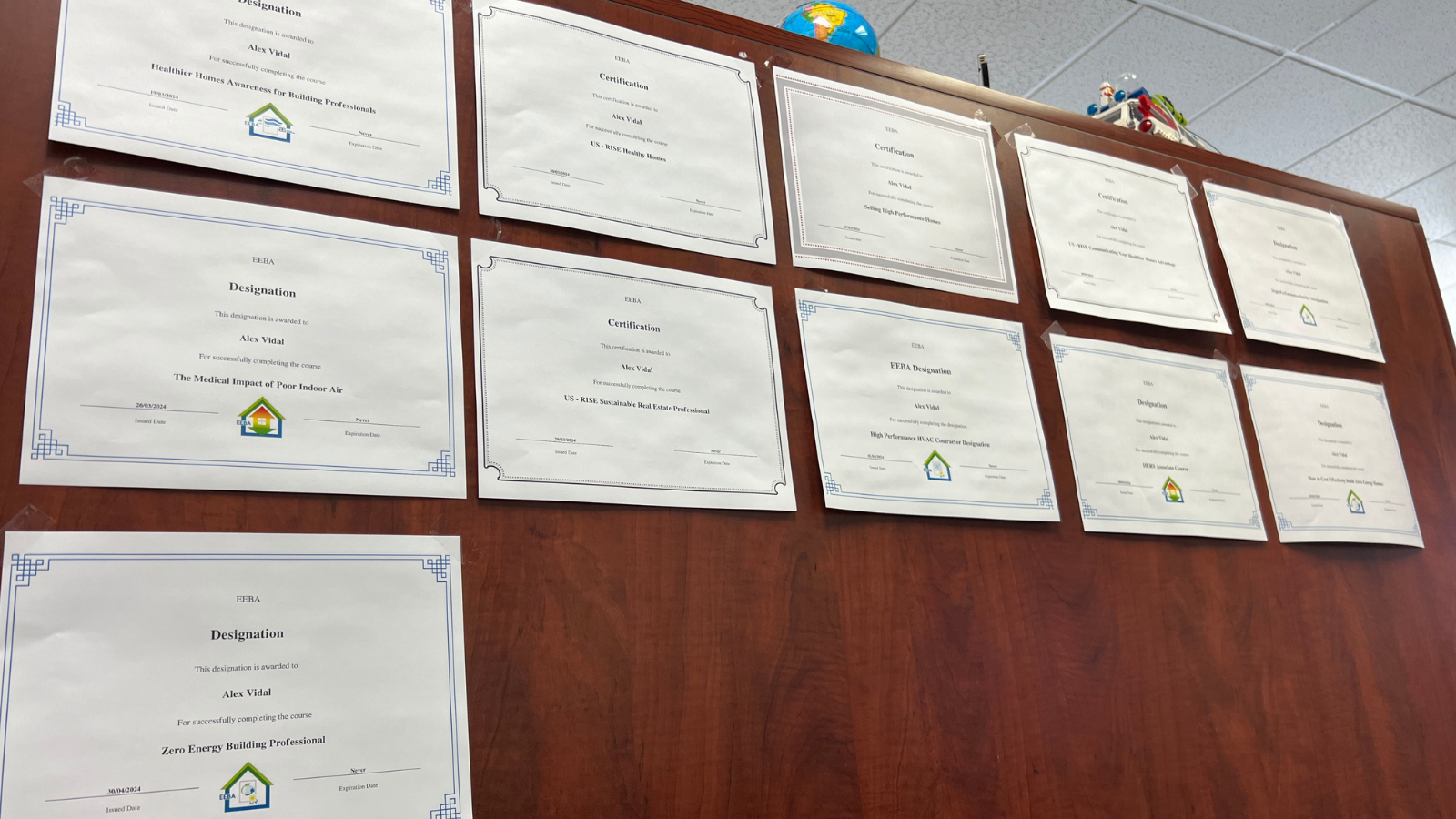
Noyes Development, based in Oregon, is a high-performance home builder and EEBA Member Builder who is empowering their staff to learn about building science and advances in sustainably constructing better homes through the EEBA Academy. Founded in 1993 by Peter Noyes, they have secured a solid reputation over the past 30 years by building high-quality, classy, and innovative homes while setting the leading standard in home building. Alex Vidal, their Marketing Coordinator, is one of their staff dedicated to deepening his knowledge and has completed over 10 EEBA courses and designations - which he displays in his office.
Tell us about your display!
I initially had a blank wall in my office, but after hanging up my first certificate, followed by the second, and then the third, I felt compelled to continue. Not only does it serve as a personal achievement, but it also showcases the expertise of our team when visitors, whether current homeowners or prospective ones, stop by our...
read more